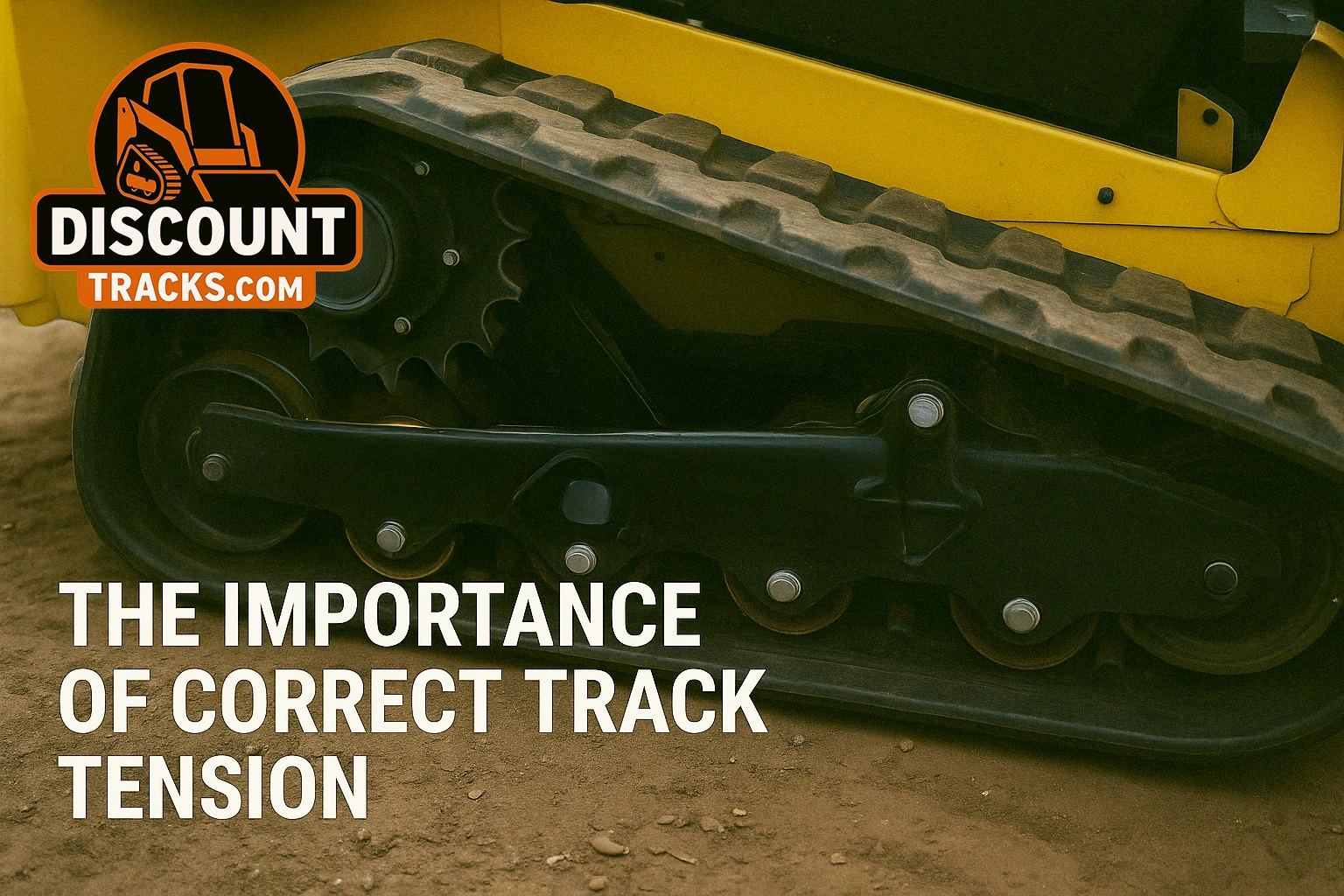Introduction
Among all routine track maintenance tasks, ensuring correct track tension may be the single most important factor in maximizing performance and lifespan. Yet, it’s often overlooked or incorrectly set.
Loose tracks risk de-tracking and cause uneven wear, while tight tracks overstress components, leading to costly failures. The result? Lost productivity, higher fuel consumption, and premature replacement of both tracks and undercarriage parts.
This guide breaks down why tension matters, then walks you through exactly how to check track tension using the sag method and adjust track tension safely and accurately for skid steers, CTLs, and mini excavators.
Why Proper Track Tension is Absolutely Critical
The Dangers of Tracks Being Too Loose
- De-tracking Risk: A loose track can slip off during tight turns or on uneven ground, halting your operation instantly.
- Sprocket Jumping: Loose tracks allow lugs to jump teeth, accelerating sprocket and track wear.
- Uneven Wear: Slack tracks don’t sit correctly, causing edge wear and misalignment.
- Performance Loss: Sloppy feel and power loss are common symptoms.
The Damage Caused by Tracks Being Too Tight
- Rubber & Cord Stress: Over-tensioned tracks stretch rubber and steel cords beyond design limits.
- Undercarriage Wear: Increased pressure on idlers, rollers, and bearings leads to rapid wear.
- Power Loss: Tighter tracks = more friction = higher fuel usage.
- Operator Discomfort: Excess tension makes for a bumpy ride and increased machine stress.
How to Check Your Rubber Track Tension (The Sag Method)
Tools You’ll Need
- Tape Measure
- Straight Edge
- Your Operator’s Manual (essential!)
- Safety Glasses
Step 1: Consult Your Operator’s Manual!
The correct track sag measurement varies between machines. Your manual will list the proper reference points and acceptable sag range (e.g., 0.5-0.75 inches).
Step 2: Position the Machine & Track
Park on flat, level ground. Follow your manual’s specific procedure, which may involve lifting a side or letting the machine settle naturally. Clear debris from the track area to ensure accurate readings.
Step 3: Measure the Track Sag
- Place the straight edge across the specified points (often from a bottom roller to an idler).
- Use your tape measure to record the distance between the lowest point of the track and the straight edge.
- Measure both tracks for accuracy.
Step 4: Compare to Specifications
Compare your sag measurement to the target listed in the manual. If it falls outside the range, it’s time to adjust.
How to Adjust Rubber Track Tension (General Guide – Refer to Manual!)
Locate the Adjustment Mechanism
Most machines use a grease-filled hydraulic cylinder that pushes the front idler. A zerk fitting is used for increasing tension, while a relief valve allows tension to be reduced.
Tightening the Track
- Use a grease gun to slowly inject grease into the fitting.
- This pushes the idler forward, reducing sag.
- Recheck sag frequently during adjustment.
Loosening the Track (Be Very Careful!)
- Locate the grease relief valve (check manual).
- Caution: Grease is under high pressure. Wear safety glasses and gloves.
- Loosen the valve slowly with a wrench to release pressure.
- Let grease escape until sag is correct. Then re-tighten the valve.
Tension Check Frequency & Best Practices
- Daily Checks: Especially during new track break-in or major temperature changes.
- Weekly Minimum: For standard operating environments.
- After Warmup: Check after the machine has been running for a while.
- Each Side: Check both tracks individually.
- Inspect Components: Worn idlers or rollers can throw off tension readings.
Maximize Your Investment: Tension & Quality Tracks
Even the best-built tracks won’t last if improperly tensioned. Regular checks and adjustments help you get the full lifespan from your Discount Tracks rubber tracks—which are engineered for durability and long-term value.
By combining great products with great maintenance, you protect your machine and bottom line.
Conclusion
Maintaining correct track tension is one of the simplest yet most impactful ways to extend your rubber track and undercarriage lifespan. Following your manual and checking sag regularly prevents breakdowns and ensures optimal machine performance.
Don’t leave it to chance! Include tension checks in your daily or weekly maintenance. And when it’s time to replace worn-out tracks, choose Discount Tracks for high-quality, long-lasting options built to perform when maintained correctly.
Explore Our Selection or Contact Our Experts for guidance on getting the best value and lifespan from your rubber tracks.


